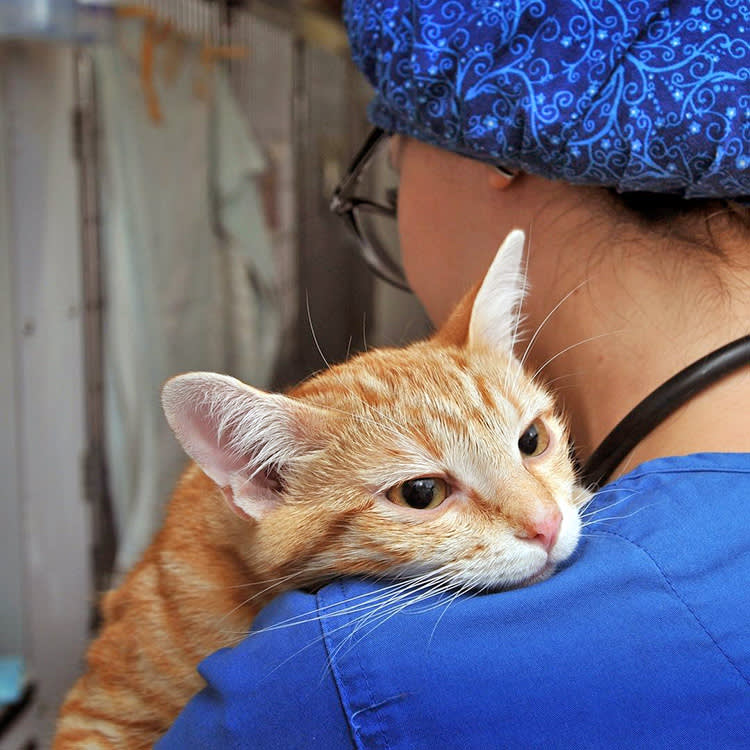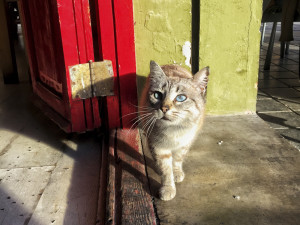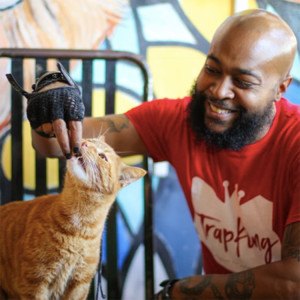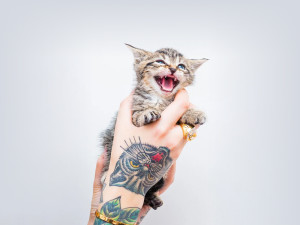A Lawsuit Could Limit the San Diego Humane Society’s Ability to Help Stray Cats
You can show your support for the SDHS at the San Diego Superior Court through Wednesday of this week.
This week, the San Diego County Superior Court will hear a case concerning a controversial lawsuit against the San Diego Humane Society (SDHS). The lawsuit addresses the SDHS’s Community Cats programopens in new tab, which involves trapping, spay/neutering, and returning stray cats — also known as Trap-Neuter-Return, or TNR — as well as vaccinating them and treating them for medical ailments.
The plaintiffs want to end the return of “friendly” cats to the streets — but animal advocates, including “Kitten Lady” Hannah Shawopens in new tab and the Feral Cat Coalition,opens in new tab say that the complaint is misguided, and limiting the Community Catsopens in new tab program would put cats in danger. In a video on her Instagram pageopens in new tab, Shaw explained would this “have a deadly, cascading effect for thousands and thousands of cats and kittens.”
Save on the litter with color-changing tech that helps you better care for your cat.
Show your support for the San Diego Humane Society.
The hearings will take place this Monday, Tuesday, and Wednesday, starting at 9:30 a.m. Shaw and the Feral Cat Coalition are asking for local supporters of the SDHS to show up in-person at the San Diego County Superior Court. The Feral Cat Coalition will be sitting on the defense side of the auditorium and invites the public to join them.
What is TNR?
In her video, Hannah Shaw also said that the plaintiffs refer to TNR against friendly cats as “abandonment” and “dumping” — but those words don’t tell the full story. “To call this abandonment is quite simply not an accurate depiction of what a community cat program does,” Shaw said. “These are scare tactics, and they’re meant to divide the community on an issue that really should be quite simple and unifying.”
How much do you spend on your pet per year?
TNR is a tried-and-true method to control the stray cat population and keep cats out of crowded shelters. Through TNR programs, volunteers and veterinarians are able to find stray cats, spay or neuter them, and release them back to their communities, drastically reducing the number of stray cats living on the streets in future generations.
Shelters aren’t necessarily the best place for stray cats.
While words like “abandonment” make TNR seem heartless, the reality is that keeping cats out of shelters is sometimes the best choice. “We don’t need to be taking cats who are in good condition and not at risk and placing them into a shelter where they are going to be a higher risk of death — and the fact is here in California, unfortunately, we still see tens of thousands of cats being euthanized every single year,” Shaw said. “Scooping up every single community cat and plopping them into a shelter is not how we will achieve maximum life-saving.”
Many cats have better life outcomes on the street than in shelters. In part, that’s because many community cats are cared for and loved by their neighbors, because stray cats often congregate in places where people live. In fact, that’s why many strays are so friendly — they’re used to being around people who care for them, even if they don’t have permanent homes. That’s why, Shaw explained, it doesn’t make sense to keep all “friendly” cats in a shelter after trapping them. “When I am returning a friendly cat to that community, I’m not dumping them. I’m bringing them back to a place where they’re friendly because people are being friendly to them,” Shaw said.
The assumption that we should put all cats into institutions isn’t universal, Shaw explained. “In most of the world people are much more comfortable with the autonomy of community animals,” she said. Shaw explores different cultural approaches to cat welfare in her new book,opens in new tab Cats of the World.
She added that socialization is a spectrum, and we shouldn’t judge a cat’s ideal lifestyle solely based on how much they like humans. “Lawsuits like this one basically assert that if you’re a friendly cat, you have to be human property,” Shaw said. “Even if it means that you might die there, it’s better for you to be in a shelter than for you to stay in the community that you know.”
Instead of focusing on temperament, Shaw believes TNR should focus on a cat’s lifestyle and health. “My perspective is that as their advocates, we should care more about what is good for them,” she said. “Are they in a good enough body condition that they can stay here in the home that they know and thrive?”










